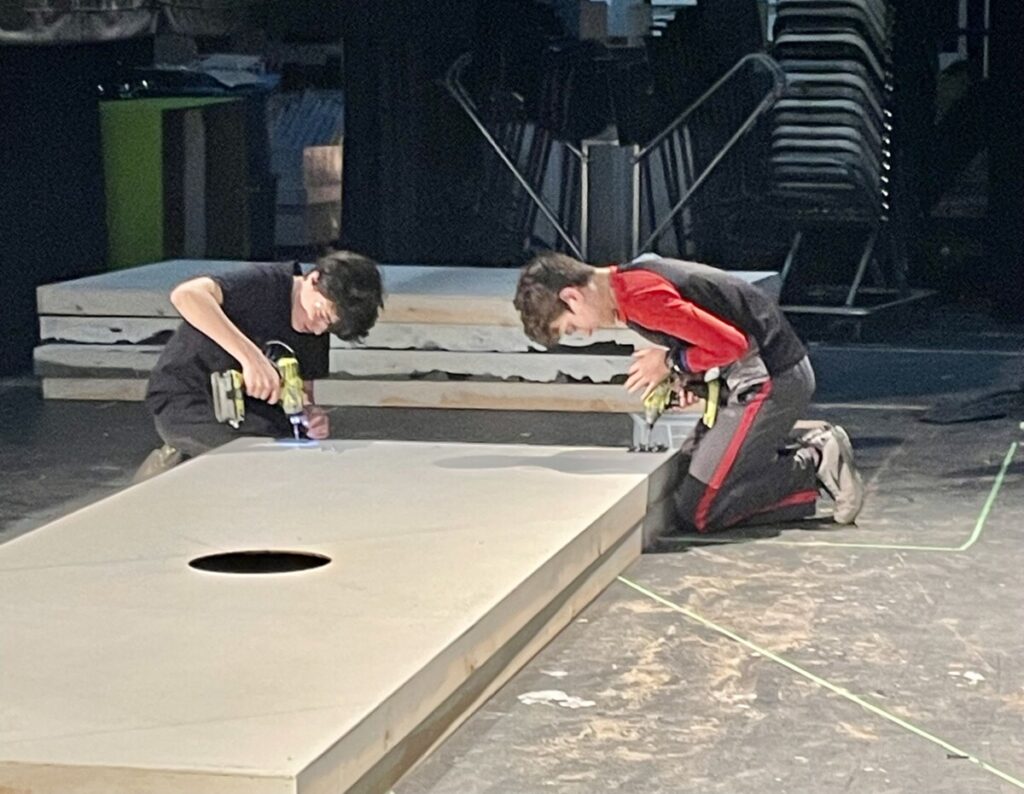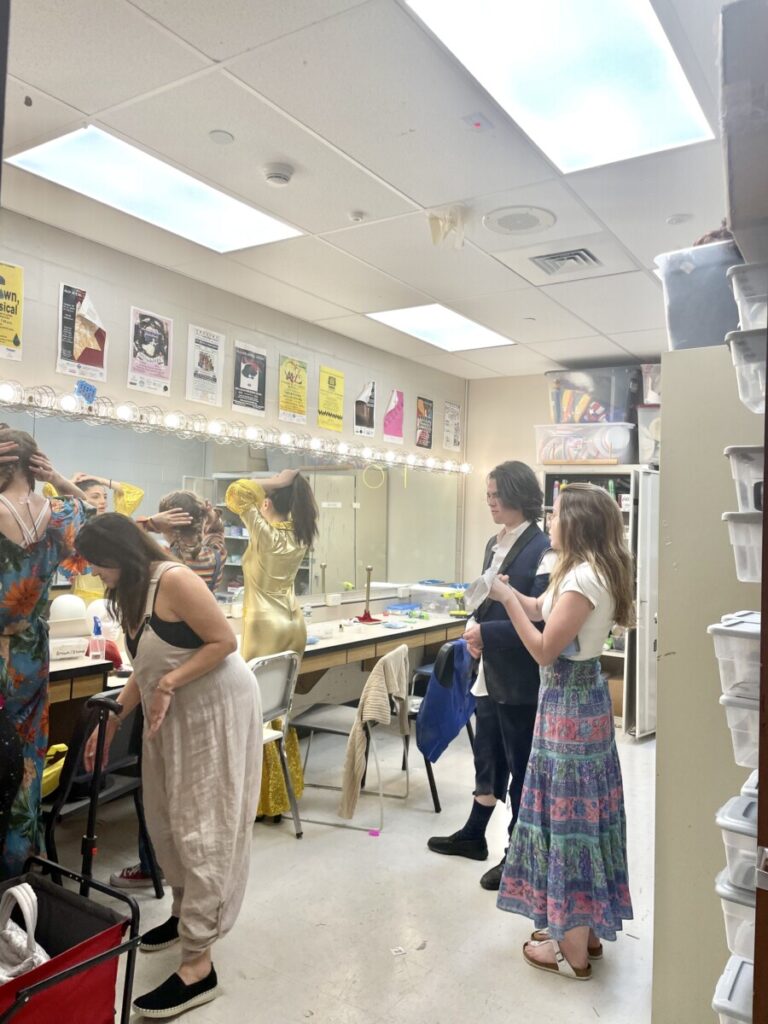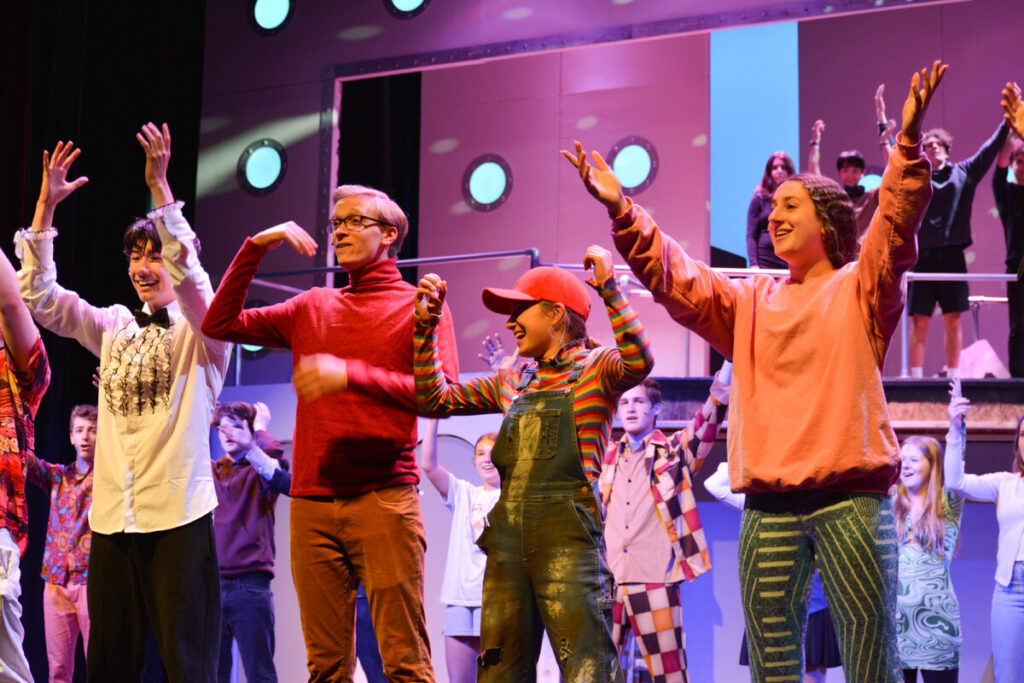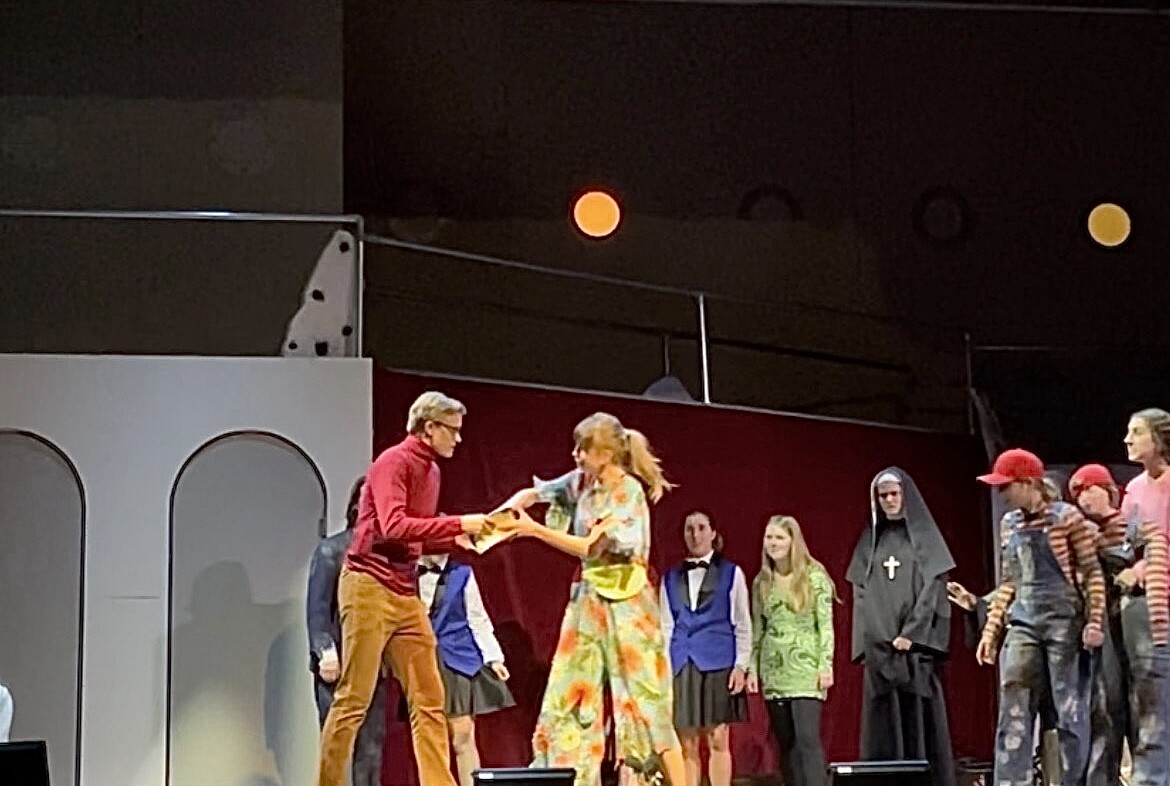By Emily Telesco, Class of 2026
You’ve seen the school shows, but have you ever wondered what goes into the production of them? I went behind the scenes of “Disaster!” – NCHS’ current Spring production, to shine a spotlight on all of the work that goes into each production, which often goes unseen by the general public. Let’s dive into things and learn more, from Saturday tech workshops to the two tech weeks leading up to opening night (this Thursday May 25th!)
7 weeks before the show
Rehearsals start immediately after the audition process and are held every day after school. Actors only have to come some of the days, depending on when they are called. With this new start also comes something called Saturday techs. These workshops are held every Saturday for 6 hours from 9-3pm as soon as rehearsals begin, and continue throughout the entire 6-8 week production process (depending on the show).

During Saturday techs, a lot happens. Sets are built, painted, and put up. Props are brought out for the show, and costumes are being sewed. On the stage, you may see people cutting wood, painting and drilling together set pieces, and setting up “flies” (which are a system that allows scenery to quickly move and change.) These workshops are essential for the success of each show and therefore require the involvement of as many people as possible! Usually, there are at least 20 people each Saturday – and anyone can get help, even if you are not directly involved with the show!
2 weeks before the show
Two weeks prior to the show, tech week starts and continues until opening night. These two weeks are extremely important for the tech team, as lighting, sound, and crew become involved. Mics are introduced to the cast, as well as costumes, hair, and makeup. The costume team is constantly making alterations to costumes. The costumes used in the shows are bought, but the team will usually add to them and create any additions as needed. For Disaster, they buy two of each costume. One they keep normal, but they will rip up the second one to create the effect of what it goes through as the ship sinks!

Moving on, the hair and makeup team decide on looks for each actor, and in the case of “Disaster”, they are in charge making each actor look as if they just got thrown all over the place in the ship. This means they are adding bruises, disheveling hair, and more!
Backstage are the running crew as well as stage managers. The stage managers are in charge of the cues for each set change – which means they tell people what to move when. They are also maintaining an organized backstage environment. Those who are part of the running crew create these set changes that you see on stage! In the back of the theater, the sound team is in charge of sound effects as well as managing microphones for the cast. This is important, as they need to make sure each actor’s mic is on at the right time to avoid any mishaps. For example, a mistake could result in the audience hearing conversations backstage! So this part is extremely important. For the person doing sound effects, they read the script to make sure when to add each sound at the correct time. And as you will hear, there are many sound effects in Disaster!
In the catwalk above the stage, other students are in charge of the spotlights. They make sure to know when and who to shine each spot on throughout the show.
During tech week, the cast runs through the show multiple times with all of these new aspects to get an idea of what it will feel and look like during the actual show.
Show time!

Eventually, opening night will arrive. Everyone involved will finally be able to put their countless hours of hard work on display during the show weekend. The music starts. The curtain rises. The actors take the stage! The spotlights shine across seamlessly, while set pieces move in and out. Sound effects echo through the theater. Voices resound. It’s a fantastic show!
So, the next time you see a NCHS production or any other theatrical production, take into consideration all the hard work going on behind the scenes. Each set piece you see, each prop, and costume has a lot of thought and effort behind the final product you see on stage. And don’t forget to see “Disaster”, which runs May 25-27 here at NCHS!




